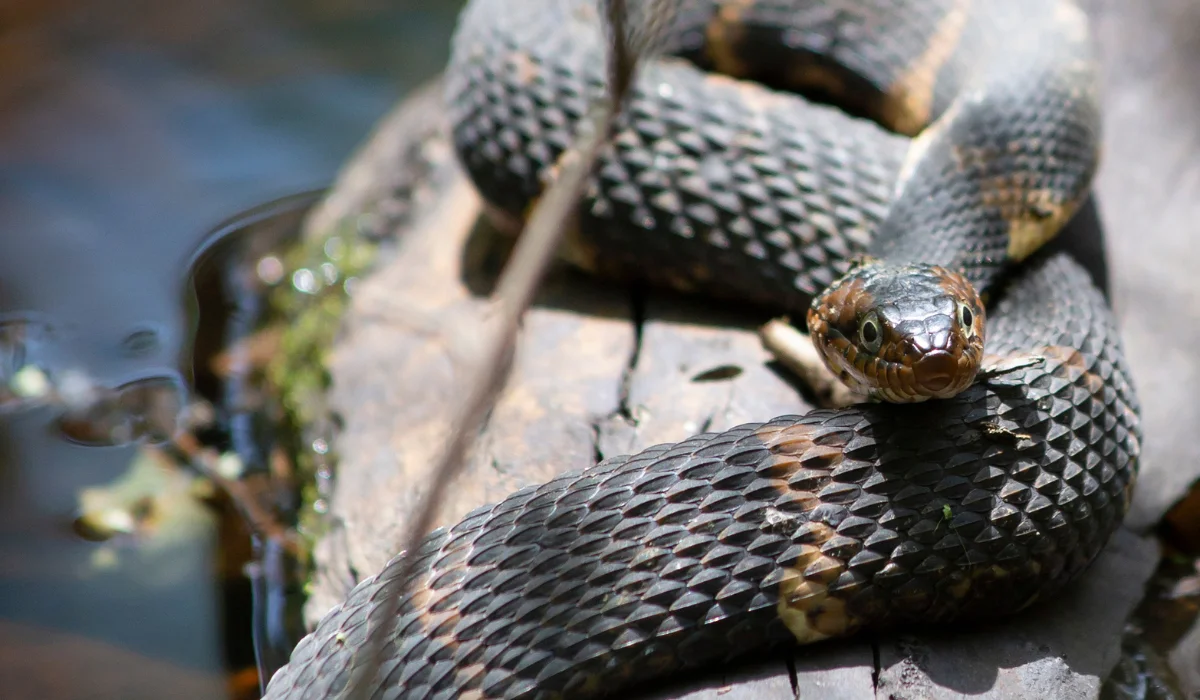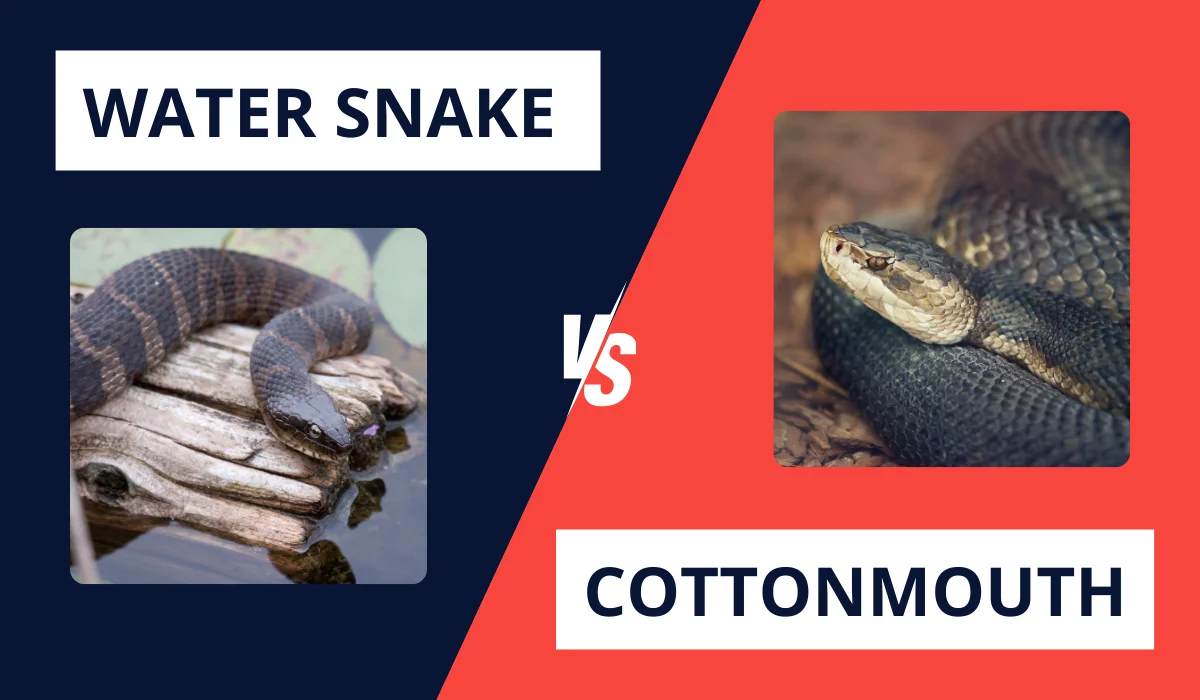
What happens when a Louisiana water snake crosses paths with a cottonmouth snake? Both are common in the southern United States, but there’s more than meets the eye. The Louisiana water snake is non-venomous, while the cottonmouth is a venomous predator.
Curious about how these two snakes compare and interact? Keep reading to explore their differences and learn how to stay safe during encounters.
Key Takeaways
- Louisiana water snakes and cottonmouths share habitats but differ in appearance, behavior, and unique traits.
- They can be found near water in the Southeastern U.S., so knowing how to stay safe during encounters is crucial.
- If bitten by a snake, immediate medical attention and following key safety steps are essential for minimizing harm.
- Calling Louisiana pest control for help with snake concerns ensures safety and peace of mind.
LOUISIANA WATER SNAKE VS. COTTONMOUTH: KEY DIFFERENCES

Louisiana water snakes and northern cottonmouths (or Water Moccasins) share environments in North America but have distinct differences. They vary in many aspects, like physical attributes, behaviors, and habitats.
Here’s a comparison that highlights the key differences between these snake species:
| Louisiana Water Snake | Northern Cottonmouth | |
|---|---|---|
| Features | Slender, round pupils, various colors with crossbands/blotches. | Stocky, triangular head shape, elliptical pupils, dark colors. |
| Unique Traits | Non-venomous, relies on speed and camouflage from body shape. | Venomous, open-mouth display with white interior. |
| Behavior | Non-aggressive, may flee or release a foul smell. | Defensive, may hiss, coil, or gape mouth. |
| Habitat | Freshwater areas like rivers and ponds. | Wetlands, sometimes brackish water, floats on the water surface. |
| Diet | Fish, amphibians, and small aquatic animals. | Fish, small mammals, and other snakes. |
| Common Subspecies | Banded Water Snake, Diamondback Water Snakes | Western Cottonmouth, Eastern Cottonmouth |
HOW TO STAY SAFE WHEN ENCOUNTERING A SNAKE
Encountering either a non-venomous or venomous water snake can be intimidating. These snakes thrive near water sources in the Southeastern United States, like Louisiana, Mississippi, Texas, and Florida.
Here’s what you can do to stay safe during encounters:
- Move slowly and steadily to increase distance without startling the snake.
- Never attempt to touch or catch either type of snake.
- If the snake is an ongoing danger, contact local wildlife experts.
- Prevent pets from approaching or provoking the snake.
These common water snakes can be easily mistaken for other species. So, residents in this region should be more cautious. Familiarize yourself and your family with them using sources like the Louisiana Department of Wildlife and Fisheries.
They also provide a guide for other constrictors and pit vipers like copperheads, timber rattlesnakes, rat snakes, coral snakes, and plain-bellied watersnakes.
WHAT TO DO IF YOU ARE BITTEN BY A SNAKE
Getting bitten by a snake can be scary. Whether it’s a harmless water snake or the venomous cottonmouth, knowing the right steps can make a difference.
Here’s a step-by-step guide on what to do:
- Breathe deeply to steady yourself. Panic can worsen the effects.
- Create a safe distance between yourself and the snake to avoid further bites.
- If safe to do so, note the snake’s color and size for reference when consulting with a local herpetologist, but don’t risk another bite.
- Seek medical attention immediately, as prompt care is important.
- Keep the bite below heart level to slow down the spread of venom.
- Remove tight clothing or jewelry since swelling might occur.
For bites from venomous snakes, do not attempt to suck the venom, as it is ineffective and may cause harm. Instead, seek medical attention promptly, where experts will administer anti-venom as needed.
For nonvenomous snake bites, clean the wound thoroughly with soap and water to prevent infection. Apply a bandage to cover the bite gently. Observe allergic reactions and seek medical help if unusual symptoms develop.
WHEN TO CALL A PEST CONTROL PROFESSIONAL
Seeing a snake like a Louisiana water snake or a cottonmouth can be startling.
While many snakes are harmless, these two have reputations that might warrant extra caution. If you have concerns about potential venomous species, calling pest control provides peace of mind.
Whether you’re in Baton Rouge or New Orleans, seeking expert help should be easy. For immediate intervention for a severe infestation, let Lajaunie’s snake specialists tailor a solution that’s right for your home.
For more information about the areas we service, visit our service page.